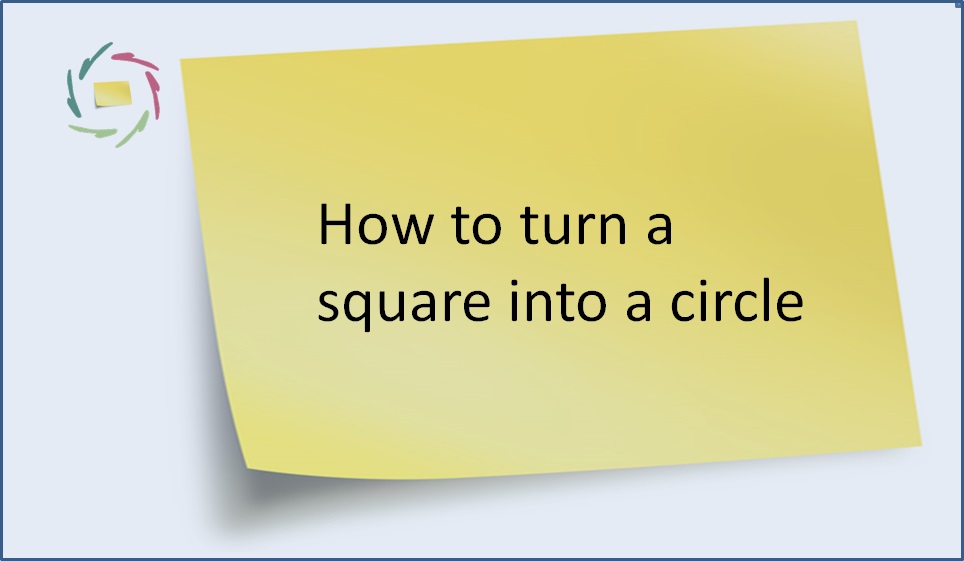34. How to turn a square into a circle

I don’t like the basic principle of behavioral therapy. Of course it’s a diverse field and every practitioner has his or her own way to bring it. Still, the basic principle of hard-core behavioral therapy puts all emphasis on appearances while disregarding or even disdaining what happens underneath.
◊◊◊
There are 2 ways to turn a square into a circle. In the first way, you cut away parts of the square and keep cutting until you have something that looks like a circle. In the second way (and mind: this is a special square), you enable the square to grow by itself, from inside. You provide it with the ‘right invitation’ and the needed ‘internal motivation’. The square grows and organically takes the form of a circle. Nature loves circles. Therefore in this way the circle comes by itself, spontaneously.
◊◊◊
Behavioral therapy of a ‘square’ happens in the cutting mode. The intention is to just take out the bothering behavior. I deem this very problematic. The final result is in any case a person who is smaller than he used to be. He has ‘lost’ something. Is this something only bothersome or is it important? According to me, it is always very important. I look at a symptom or problematic behavior always as a symbol of the total person. Therefore one cannot cut it out without really damaging that person.
◊◊◊
The possible damage includes: return of problematic behavior, enhancement of depression, psychosomatic illness, aggressive behavior, accident-proneness, and last but not least the loss of potential to ‘grow’ as a total person. This is: to fully be in this world, to love, to transcend a purely materialistic existence. In other words: to open one’s wings and fly.
◊◊◊
It is extremely difficult to do proper experimental research about this. So it hasn’t been done. In this way, we know almost nothing. One should at least admit that. My guess is as good as yours, if you like. But: if my guess is right, then what is being done in behaviorial therapy may well be immensely inhumane. Therefore it’s important.
◊◊◊
In the other way of making a circle (from inside, from the deeper self out, by sending intense invitations to it) the outside also changes, but not in this direct cut-what-bothers way. It’s much less aggressive and therefore much less dangerous. In addition to this, the end is always more, not less.
◊◊◊
When measuring success, behavioral therapy takes as measure its own basic principle: something is right if it somehow looks right from the outside. If a person shows a problem, then let him not show the problem anymore. That of course is OK for a car but not for a human being. In the latter case the kind of circle you end up with is of major importance.
◊◊◊
Weirdly enough, behavioral therapy that is now according to many (at) the cutting edge of psychoscience was originally based on theories of behaviorism… after the heydays of the latter. That makes it a kind of anachronism from birth on. To me, it keeps looking square. Nature loves no squares as ‘therapies’. Maybe it will itself grow into a circle?
◊◊◊


